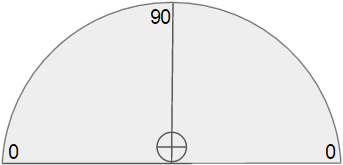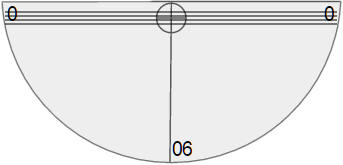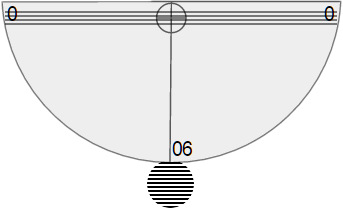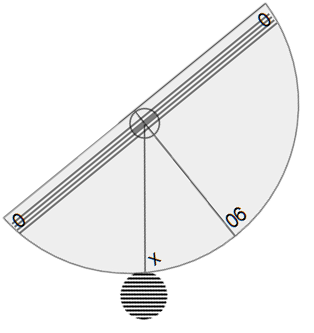Calculate height of objects
Knowing whether a tree has the potential to crash into your house
Here is a classic scenario: Local would-be lumberjack decides to cut-down tall tree right beside house. Tree falls towards house. Disaster ensues. Others have a laugh at the homeowner's expense. This post will not help if you find yourself in a similar situation. Instead, this post will allow you to make an informed decision when that tree has a little bit of distance between itself and the house and its height makes the outcome a little blurry.
If you are you going the phone-app. route or already have a clinometer, skip this part.
Put the protractor on a table.

Flip the protractor upside-down.
Tape the straw near the flat-edge of the protractor.

Cut a piece of string so its length is greater than the height of the protractor.
Tape one end of the string to the quarter.
Tape the other end of the string to the center of the protractor right below the straw.

Look through the straw and up to the top of an object.
The string/coin combination will have moved to a new spot on the protractor.

Read the number below the string and subtract from ninety.
The result tells us the angle of inclination.
In order to do this effectively, the area surrounding the tree needs to be flat-ground. Any slope will produce inaccurate results.

Tangent is a trigonometric function leveraging two-sides of a right triangle and is defined as: \(tan\theta = "opposite"/"adjacent"\). In our case, we know \(\theta\) (our clinometer reading) and the \("adjacent"\)-value (distance from inclination measurement to tree). To get \("opposite"\) (height), we just re-order the equation: \("opposite" = tan\theta * adjacent\).
But wait, there's more...
Unless the clinometer reading took place on the ground, we need to add the height the reading occurred to our previous result. This is normally the distance from your eyes to the ground. For our example, we will go with fifty inches. Then, our estimated height becomes: \(24 ft. + 50 "in." = 28 ft. 2 "in."\). Lastly, take the estimated value and subtract from the previously obtained baseline.
If you want to bypass using \(tan\), then use this shortcut. Given the sum of all interior angles of a triangle equal 180 and we already know one-angle of our imaginary triangle is ninety, then if our clinometer-angle is fourty-five, the remaining angle is also fourty-five. With these angles, the two sides of importance to us are equal. This means the only measurement needed is from the clinometer reading-point to the tree!
While both methods for calculating height are effective, they both depend on a couple factors:
The clinometer will most-likely be the greatest source of error. The further the reading moves away from fourty-five degrees, the greater the potential for error (\(tan45 = 1\)). If you are getting readings in the eighties, either you are dealing with a super tree, or you are just too close to the tree. Lastly, be careful and take several measurements. And remember, if you decide to cut down the tree, sometimes it is better to hire a professional.